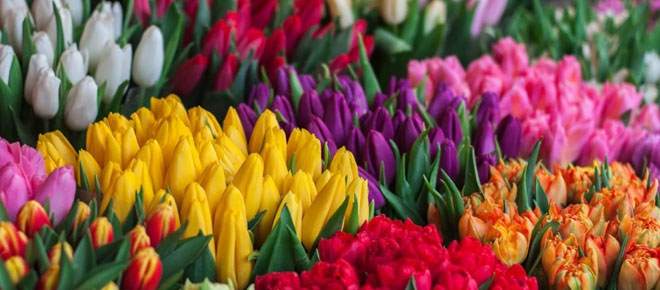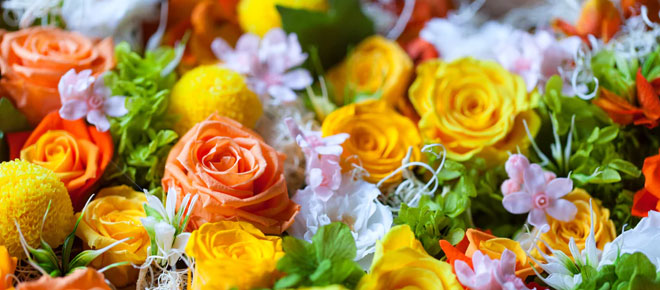Top Most Exquisite Flowers You Need in Your Garden

From orchids with luminous petals to saffron flowers that require 15 years of painstaking harvesting to make just one bulb, these beauties brighten gardens in all regions.
Cheerful black-eyed Susans, a favorite perennial wildflower of North America, symbolize encouragement and motivation. They thrive in sunny gardens and reseed themselves to return year after year. Elegant gladiolus, native to Europe and South Africa, add height to a garden with tall spikes of blues, purples, and whites. Staggering plantings from corms in the spring can provide blooms from summer through fall.
Hydrangea
Hydrangeas are so popular, they even have a day dedicated to them (January 5). This flower is a garden staple with eye-popping blooms and a cool color palette.
The flowers grow in large flowerheads, called corymbs or panicles, at the ends of stems. These flowerheads contain two types of flowers: small non-showy fertile flowers in the center and larger showy sterile flowers that extend into a ring around the small ones.
Different cultivars produce various colors and flower forms. For example, the 'Let’s Dance 'Big Easy' hydrangea has vivid pink blooms while the 'Nikko Blue' hydrangea produces rich blue flowers. Hydrangeas bloom from spring to summer or autumn depending on the variety. Plant with other colorful flowers, such as ornamental grasses or coral bells, to highlight their beauty. Plant in full sun for best results. These plants are easy to grow and will last a long time, with minimal maintenance.
Yarrow
Yarrow is an easy-to-grow perennial that is very heat and drought-tolerant. Known as Achillea millefolium, the wild native plants produce broad flat-topped flower clusters in white, pink, and red shades throughout summer. The foliage has a feather-like or fern-like quality to it and adds texture to the garden.
Whether you choose to grow the wild species or one of the many cultivars, the plant will attract butterflies and other pollinators to the garden. Yarrow flowers also emit a strong odor that deters deer and rabbits, so the plant makes an excellent choice to intersperse in any garden prone to herbivorous mammalian visitors.
Yarrow needs no fertilizer but it is smart to deadhead the flowers partway through the season when they fade so that the plant will be able to grow another round of blooms before the summer ends.
Marigolds
Marigolds are easy-to-grow annuals that offer a big splash of bright, long-blooming color. These low-maintenance plants thrive in most conditions, especially in full sun. They tolerate heat and cold, and they make good companions in garden beds as well as vegetable gardens. Many varieties are also tolerant of insect pests.
Choose from a wide range of heights and flower shapes, including single, anemone, frilled, and crested blossoms in shades of yellow, gold, orange, mahogany, and even bicolor. 'Striped Marvel' is a popular cultivar with each petal striped with two or three colors, and 'Tall Sierra Orange' offers bold, deep orange blooms that reach up to 24 inches tall. Keep flowers fresh by removing spent blooms and regularly feeding them with a liquid fertilizer every two weeks. They do best in full sun and rich, well-drained soil.
Pansies
Pansies (Viola x wittrockiana) bring bright color to the garden in cool weather and often continue to bloom after other flowers have faded. They're also easy to grow, requiring little more than regular watering and periodic application of a balanced liquid fertilizer.
The 'Jolly Joker pansy, for instance, has orange flowers with deep purple upper petals and a purple outline that stands out against the green backdrop of grasses and other spring perennials. Meanwhile, the 'Black King' pansy features rich, velvety purple petals that evoke the beauty of royalty.
You can also pair pansies with other cool-season flowers such as violas and primroses for an eye-catching color display in flower beds and borders. They also make a lovely choice for containers and window boxes. Pansies are tolerant of cold and light frosts, so they extend the gardening season in northern regions. Check out 1800Flowers.com Coupon for potential discounts and savings when exploring preserved flowers and enhancing your home decor.
Cosmos
Many flowers gain the reputation of being easy for beginners but that doesn't mean experienced gardeners should skip them. Cosmos (Centana sulphureus) is a summer annual that tolerates poor soil conditions and thrives in heat, even when other plants struggle.
They're also relatively pest-free and easy to grow from seed. They are unfazed by drought and aren't too picky about the amount of water they receive but do best with full sun.
They're a favorite of pollinators, including monarchs, bees, and small finches. They attract lacewings, tachinid flies, and parasitic miniwasps that prey on destructive pest insects. Deadhead regularly to extend the flowering season and keep them looking tidy. They reseed readily so plant them with other cut-and-come-again annuals like zinnias and gomphrena for low-maintenance summer beauty. They're also an excellent choice for cutting gardens as they dry nicely.
Forget-Me-Not
The diminutive, radially symmetrical flowers of forget-me-not bloom for several weeks. Plant them in rich, consistently moist soil for the longest blooming period. Mulch is also helpful in keeping moisture consistent and cool.
These pretty little blue bloomers are easy to grow and are a lovely addition to shaded garden beds. They're also a great companion for daffodils and tulips.
You can establish these flowers in the spring from seed, but they are best established from the fall sowing of a packet of seeds. They're best planted in the shade or in filtered sunlight. These plants are not prone to many diseases or pests, but powdery mildew can appear on their foliage late in the year as they prepare to set seed. This is a minor problem that can be minimized with regular watering and fertilization. Once established, these plants reseed themselves quite profusely and spread easily.
Salvia
The brightly colored flowers of salvias are a favorite of bees, butterflies, and hummingbirds. Many are heat- and drought-tolerant and can be grown as perennials or as annuals, depending on the variety. They also work well in containers. Deer and rabbits tend to leave them alone, and their foliage has a pleasant herbal scent.
The hardy 'Plumosa' salvia (Salvia microphylla 'Plumosa') features thick spikes of rich purple blooms throughout the summer, making it a great choice for the middle of a flower border. The 'Hot Lips' salvia (Salvia microphylla) is another standout, with white blooms that look like they have been kissed by red lips. It is a perfect pairing with a purple-leafed shrub such as the new 'Summer Wine' ninebark. The Wish salvias (Salvia x 'Wendy's Wish', 'Ember's Wish' and 'Love and Wishes') are also newcomers to watch.
Butterfly Bush
A fuchsia-colored butterfly bush (Buddleja davidii) is an eye-catching addition to any garden or landscape. This deciduous shrub blooms all summer and attracts butterflies and bees.
Buddlejas are seemingly impervious to difficult conditions and are well adapted for urban plantings. They thrive in challenging environments, despite pollution, drought stress, and insect pressure.
There are many cultivars of buddleia to choose from with different flower colors and sizes. Try 'Funky Fuchsia', which features abundant, long-lasting fuchsia flower clusters.
Be careful to plant buddleia only in full sun and in well-drained soil. A little extra water can help this plant survive dry, sandy, or clay soils. Instead of butterfly bushes, look for native perennial flowers that are pollinator favorites: For spring, try spirea and ninebark; for summer, plant azaleas, weigela, or rose of Sharon; and for fall, consider Sweet Pepperbush (Clethra alnifolia). Also plant drifts of tall native flowering shrubs, such as Joe-Pye Weed or Virginia Sweetspire.
Black-Eyed Susan
The state flower of Maryland, Black-Eyed Susan (Rudbeckia hirta) is an easy-to-grow sun-loving wildflower that brightens the garden or meadow while attracting important pollinators. With its cheerful yellow flowers and drooping petals, this plant is a classic for sun-loving gardens.
Each flower head consists of a prominent black or dark brown central cone surrounded by rich yellow, daisy-like rays that droop toward the ground. They grow on long, rough-textured stalks.
Black-eyed Susans are essential in every pollinator garden and make a great addition to native plants or prairie gardens. They also look fantastic with other flowers, shrubs, and grasses, like zinnias, globe thistle, sedum, perennial hibiscus, and joe-pye weed. They are tolerant of most soil conditions but do best with full sun. They can be planted directly in the garden or sown indoors from March. Check out the Gifts and Flowers Coupon Code for potential discounts and savings when considering a variety of flowers for your garden and landscaping projects.
Coneflower
Echinacea, or coneflower (Echinacea purpurea) is a perennial plant that grows in most climates and is easy to grow. It is tolerant of drought once established but will bloom more profusely with consistent moisture. It also tolerates a range of soil conditions, but not soggy or sandy ones.
It is a great pollinator plant, attracting bees and butterflies all summer and into autumn. Leaving spent flowers for birds to eat is another great feature of this flower. Goldfinches especially are crazy about them!
While most traditional varieties of coneflower get tall and sprawling, new shorter selections like Magnus and Pow Wow make a nice addition to the perennial garden. Use them in the back of mixed borders or cottage gardens. They also work well in mass plantings and containers. Most types require little or no supplemental fertilizer.
Conclusion
There are numerous beautiful flowers that you can add to your garden to enhance its beauty and appeal. From the vibrant sunflowers and roses to the delicate orchids and lilies, there is a wide variety to choose from. By selecting the right flowers that complement your garden's theme and color scheme, you can create a breathtaking outdoor oasis that you can enjoy for years to come. So go ahead and get planting!






